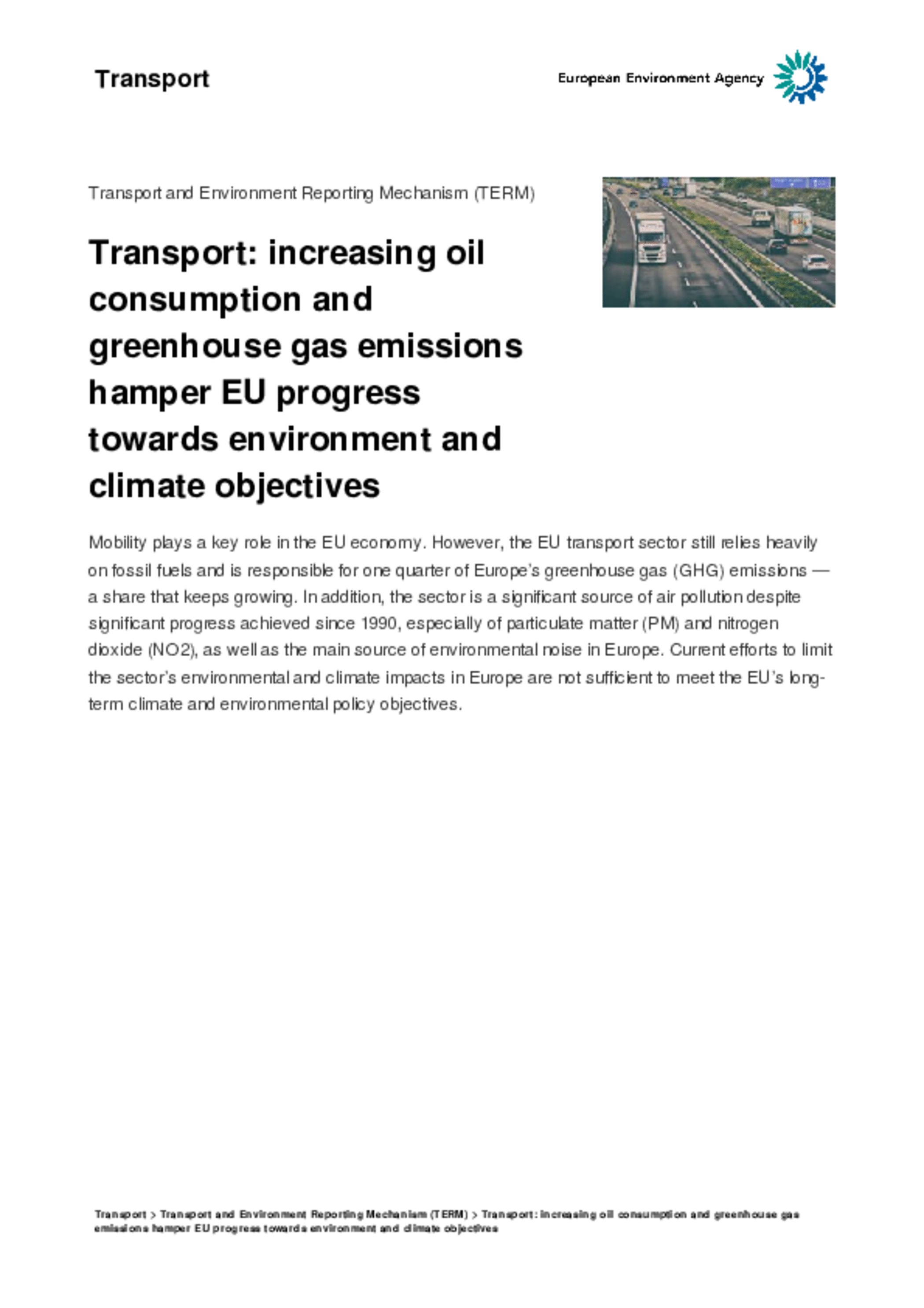All official European Union website addresses are in the europa.eu domain.
See all EU institutions and bodiesBriefing 15/2019
Mobility plays a key role in the EU economy. However, the EU transport sector still relies heavily on fossil fuels and is responsible for one quarter of Europe’s greenhouse gas (GHG) emissions — a share that keeps growing. In addition, the sector is a significant source of air pollution despite significant progress achieved since 1990, especially of particulate matter (PM) and nitrogen dioxide (NO2), as well as the main source of environmental noise in Europe. Current efforts to limit the sector’s environmental and climate impacts in Europe are not sufficient to meet the EU’s long-term climate and environmental policy objectives.

